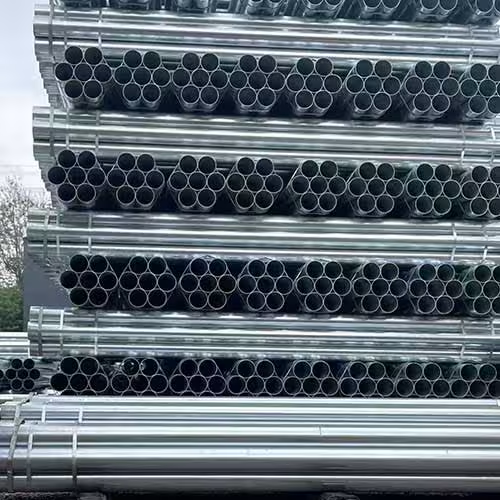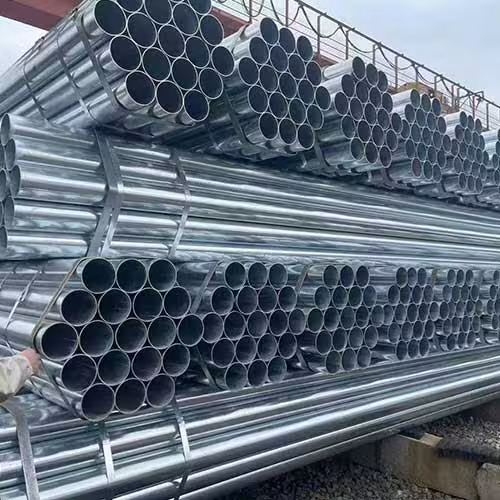Welcome to My Blog!
Before we dive into the content, I’d love for you to join me on my social media platforms where I share more insights, engage with the community, and post updates. Here’s how you can connect with me:
Facebook:https://www.facebook.com/profile.php?id=61565500692293
Now, let’s get started on our journey together. I hope you find the content here insightful, engaging, and valuable.
Table of Contents
Introduction
Galvanized steel pipe has been a staple in plumbing systems for decades due to its durability and corrosion resistance. These pipes are coated with a protective layer of zinc, which prevents rust and extends their lifespan. Whether for residential, commercial, or industrial plumbing, galvanized steel pipes offer a reliable solution for water supply and drainage systems.
In this guide, we will explore the benefits, applications, installation methods, and maintenance of galvanized steel pipes in plumbing systems. We’ll also compare them with other piping materials and answer frequently asked questions to help you make an informed decision.
What Is a Galvanized Steel Pipe?

A galvanized steel pipe is a carbon steel pipe coated with a layer of zinc through a process called galvanization. This coating protects the pipe from corrosion, making it ideal for plumbing applications where moisture exposure is constant.
Types of Galvanization Processes
There are two primary methods used to galvanize steel pipes:
- Hot-Dip Galvanizing – The pipe is submerged in molten zinc, forming a thick, durable coating.
- Electro-Galvanizing – A thinner zinc layer is applied using an electrochemical process.
Hot-dip galvanized pipes are more commonly used in plumbing due to their superior corrosion resistance.
Advantages of Using Galvanized Steel Pipe in Plumbing
Galvanized steel pipes offer several benefits that make them a preferred choice for plumbing systems:
Corrosion Resistance
The zinc coating prevents rust, ensuring a longer lifespan even in wet environments.
Durability & Strength
Steel pipes can withstand high pressure and mechanical stress, making them suitable for both underground and above-ground plumbing.
Longevity
Properly maintained galvanized steel pipes can last 40-50 years, reducing replacement costs.
Fire Resistance
Unlike plastic pipes, steel pipes do not melt or release toxic fumes in case of fire.
Cost-Effectiveness
While initial costs may be higher than PVC or PEX, the long-term durability makes galvanized steel pipes a cost-efficient option.
Applications of Galvanized Steel Pipe in Plumbing
Galvanized steel pipes are widely used in various plumbing applications, including:
- Water Supply Lines – Carrying potable water in residential and commercial buildings.
- Drainage Systems – Used in sewage and stormwater drainage due to their strength.
- Gas Lines – Some older gas distribution systems use galvanized pipes (though modern codes often require different materials).
- Industrial Plumbing – Factories and processing plants use these pipes for high-pressure systems.
Comparison of Galvanized Steel Pipe vs. Other Plumbing Pipes
To understand why galvanized steel pipe remains relevant, let’s compare it with other common plumbing materials:
| Feature | Galvanized Steel Pipe | PVC Pipe | Copper Pipe | PEX Pipe |
|---|---|---|---|---|
| Corrosion Resistance | High (with zinc coating) | Moderate | High | High |
| Durability | 40-50 years | 25-40 years | 50+ years | 30-50 years |
| Pressure Handling | Excellent | Good | Excellent | Good |
| Installation Ease | Requires threading/welding | Easy (glue joints) | Soldering required | Very easy (crimp fittings) |
| Cost | Moderate | Low | High | Moderate |
| Fire Resistance | Excellent | Poor (melts) | Good | Poor |
This table highlights why galvanized steel pipes are still favored in certain applications despite the rise of alternative materials.
How to Install Galvanized Steel Pipes in Plumbing Systems
Proper installation ensures the longevity and efficiency of galvanized steel pipes. Here’s a step-by-step guide:
Measuring & Cutting
Use a pipe cutter or hacksaw to cut pipes to the required length. Deburr the edges to prevent leaks.
Threading the Pipes
Apply pipe thread sealant or Teflon tape to ensure a watertight connection. Use a pipe wrench to tighten fittings securely.
Supporting the Pipes
Use pipe hangers or clamps every 6-8 feet to prevent sagging.
Pressure Testing
After installation, test the system for leaks before finalizing.
Maintenance & Common Issues with Galvanized Steel Pipes

While galvanized steel pipes are durable, they can develop issues over time:
Internal Corrosion & Mineral Buildup
Older pipes may corrode internally, reducing water flow. Regular flushing can help remove sediment.
Leaks at Joints
Check threaded connections periodically for leaks.
Replacement Considerations
If pipes show significant rust or reduced water pressure, consider replacing sections or switching to modern alternatives.
Conclusion
Galvanized steel pipes remain a strong choice for plumbing systems requiring durability and corrosion resistance. While newer materials like PEX and PVC offer easier installation, galvanized steel pipes excel in high-pressure and fire-resistant applications.
If you’re working on an older plumbing system or need a robust solution for industrial use, galvanized steel pipes are worth considering. However, for modern residential plumbing, alternatives may provide better cost-efficiency and easier maintenance.
FAQ
How long do galvanized steel pipes last?
With proper maintenance, they can last 40-50 years, but internal corrosion may reduce lifespan in some cases.
Can galvanized steel pipes be used for drinking water?
Yes, but older pipes may leach zinc and rust, affecting water quality. Many modern codes recommend alternatives like copper or PEX.
How can I tell if my galvanized pipes are corroded?
Signs include low water pressure, discolored water, and visible rust on pipe exteriors.
Can I connect galvanized pipes to other materials like PVC or copper?
Yes, using dielectric unions to prevent galvanic corrosion between dissimilar metals.
Are galvanized steel pipes still used in new construction?
Most new plumbing systems use PEX or copper, but galvanized pipes are still used in specific industrial applications.

